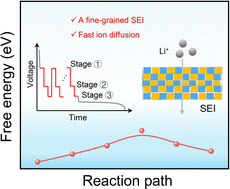Cd Single Atom as an Electron Mediator in an S‐Scheme Heterojunction for Artificial Photosynthesis of H2O2
Advanced Energy Materials, Volume 15, Issue 23, June 17, 2025.

To achieve precise coupling between two semiconductors with a charge shuttle and interfacial interaction modulation, a catalyst architecture with a Cd single atom mediated S-scheme heterojunction formed by interfacing CdS and TiO2 nanoparticles is proposed. The prepared catalyst exhibits an H2O2 production rate as high as 60.33 µmol g−1 min−1 under UV–vis light irradiation.
Abstract
Developing conductor-mediated S-scheme heterojunction photocatalysts imitating natural photosynthetic systems emerges as a promising approach to hydrogen peroxide (H2O2) production. However, achieving precise coupling between two semiconductors with a charge shuttle and modulating the interfacial interactions still remain a significant bottleneck. Herein, we propose a catalyst architecture with a Cd single atom mediated S-scheme heterojunction formed by interfacing CdS and TiO2 nanoparticles. This catalyst exhibits an H2O2 production rate as high as 60.33 µmol g−1 min−1 under UV–vis light irradiation, which is attributed to the efficient charge transport at the interface of CdS and TiO2 thanks to the Cd single atom mediated S-scheme. In-situ X-ray photoelectron spectroscopy (XPS) and electron spin resonance (ESR) spin-trapping tests confirm the S-scheme charge transfer route. Femtosecond transient absorption (fs-TA) spectroscopy and other ex-situ characterizations further corroborate the efficient charge transport across the catalyst interface. This work offers a new perspective on constructing single atoms mediated heterojunctions to enhance photocatalytic performance.

















































































![The sights of Paris Air Show, one last time: Day 4 [Photos]](https://breakingdefense.com/wp-content/uploads/sites/3/2025/06/20250617-helenedelacoste-Paris-Air-Show-037-scaled-e1750357690820.jpg?#)





























































